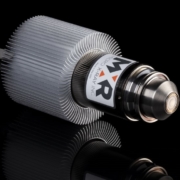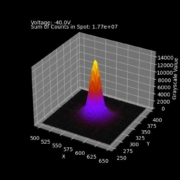X-ray Sources 101: How to Choose a Target Material for XRF
Target Material for XRF Instruments
Selecting the appropriate anode target material for XRF (X-ray fluorescence) instruments is critical for obtaining precise and dependable results. The X-ray tube is the heart of the XRF equipment, and the target material inside the X-ray tube determines the primary spectrum of X-rays emitted. Different target materials possess unique properties, and choosing the appropriate material can help you reduce measurement time, obtain more precise results, and generally optimize your XRF calculations.
Elements to be Measured
The first question in any XRF system design is: what are you looking for? There many different applications for XRF: some XRF machines are designed to quickly sort between different scrap metals, some are designed to quantify trace amount of Sulphur in crude oil, some are designed to analyze coating purity and thickness over various substrates, and some are general purpose machines which need to be robust enough to be able to identify nearly any element within a wide range of atomic numbers. Understanding the materials to be measured, the minimum detection limits of those materials, and the time allocated for measurement are crucial to selecting the right X-ray tube and target.
Primary X-ray Spectrum
The target material, when bombarded with electrons, creates the primary X-ray beam. That beam is then directed at the material under test, which generates a secondary X-ray beam. It is the that secondary beam whose spectra is captured by the X-ray detector and analyzed.
The spectrum created by this beam is a function of the target material and the energy of the electrons in the beam (set by the Excitation Voltage). The X-ray spectrum is made of up two components: the bremsstrahlung background radiation, and characteristic peaks fluoresced by the target material.
Depending on the characteristic peaks of the elements that are being resolved, the specific characteristic peaks of a material such as Rh or Ag may be beneficial. For more general XRF applications which are relying on long measurement times to resolve unknown materials, a W target with a large bremsstrahlung and minimal characteristic peaks may be beneficial.
In the chart above, we can see spectra from two different X-ray tubes with different target materials. These are same X-ray tube type, run at the same excitation voltage (50kV), the same beam current, and the same acquisition time, and the same detection system. Neither spectrum is inherently better or more useful for XRF than the other; depending on the elements we are trying to analyze, the peaks around 20keV in the orange spectrum may be useful, or in other cases the higher bremsstrahlung shown in the blue spectrum may be more beneficial.
Power Requirements & Target Durability
Faster measurement times can be enabled with higher flux. For any given target material, an increase in beam current will lead directly to an increase in flux. A high power application, or an application with a particularly demanding thermal environment, may require a relatively more durable X-ray target to ensure a long service life. The characteristic lines of Au, for instance, are very helpful in resolving certain elements. However, Au is notoriously soft, and the power of the X-ray spot can easily damage the target disk, resulting in an unusable X-ray tube. Therefore, Au target tubes are rare, and only deployed in very specific applications with very specific requirements.
By contrast, a W target may have fewer useful characteristic peaks for XRF, but its durability means that it can withstand much higher power loading than a comparable spot size Au target. Therefore, in some applications it may be more suitable to select a W target tube with a robust bremsstrahlung and lower characteristic peaks with a higher power rating compared with an Au target tube with specific characteristic peaks but with a lower overall power rating.
Conclusion
In summary, selecting the appropriate anode target material for XRF instruments is essential for obtaining precise and reliable results. Before making your selection, it is important to understand the tradeoffs between the available options.
Micro X-Ray manufactures end window and side window tubes optimized for XRF with Rh, W, Mo, Ag, Au, Cr, Co, and other targets. We’re always happy to talk through the pros and cons of each target material given your unique XRF requirements. Please reach out today!
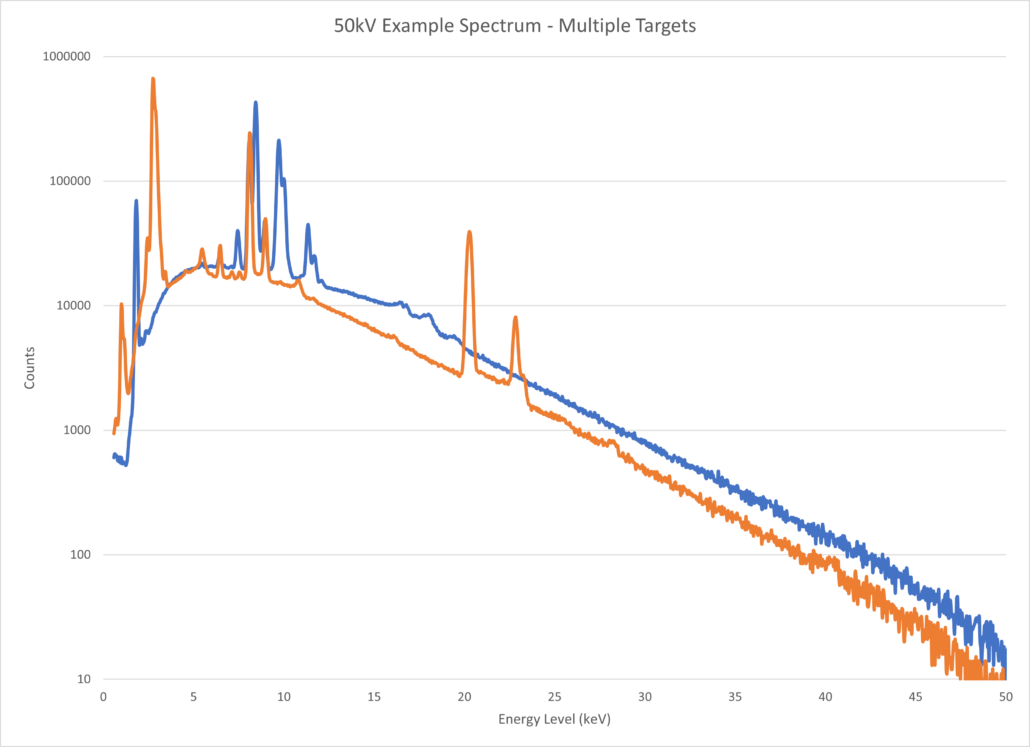

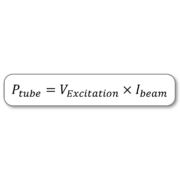
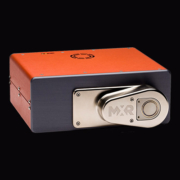 2020 Micro X-Ray
2020 Micro X-Ray